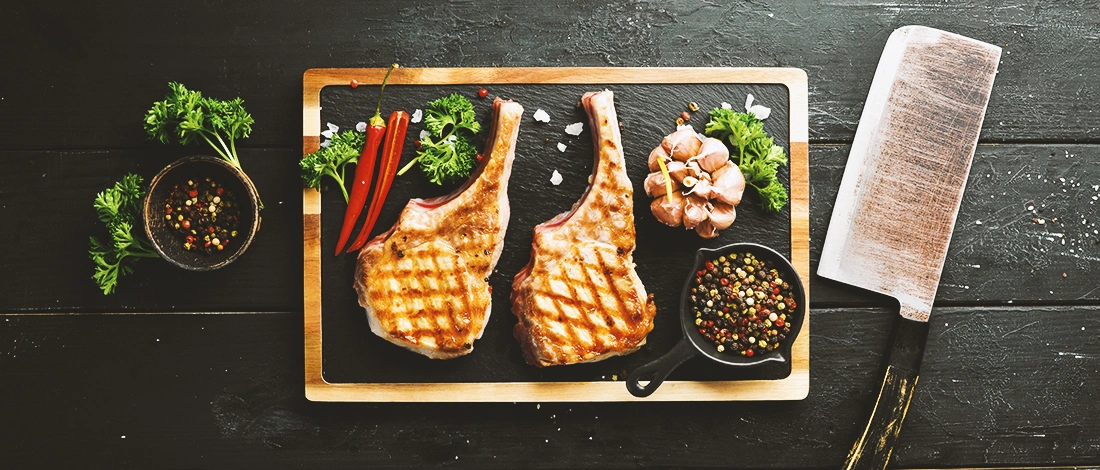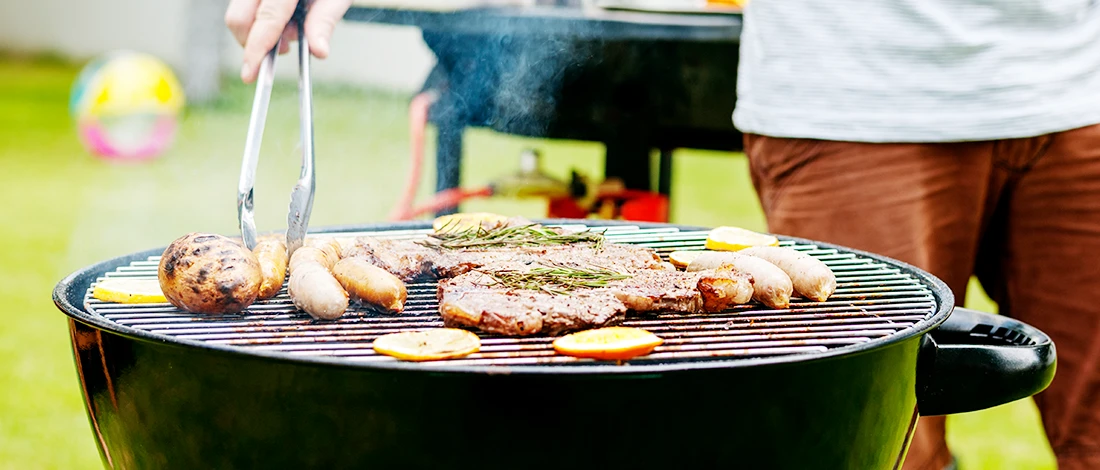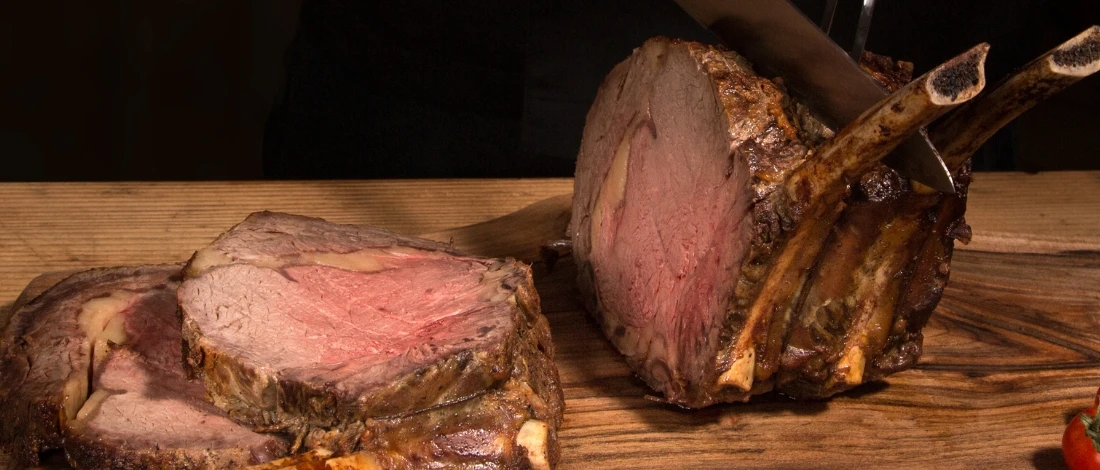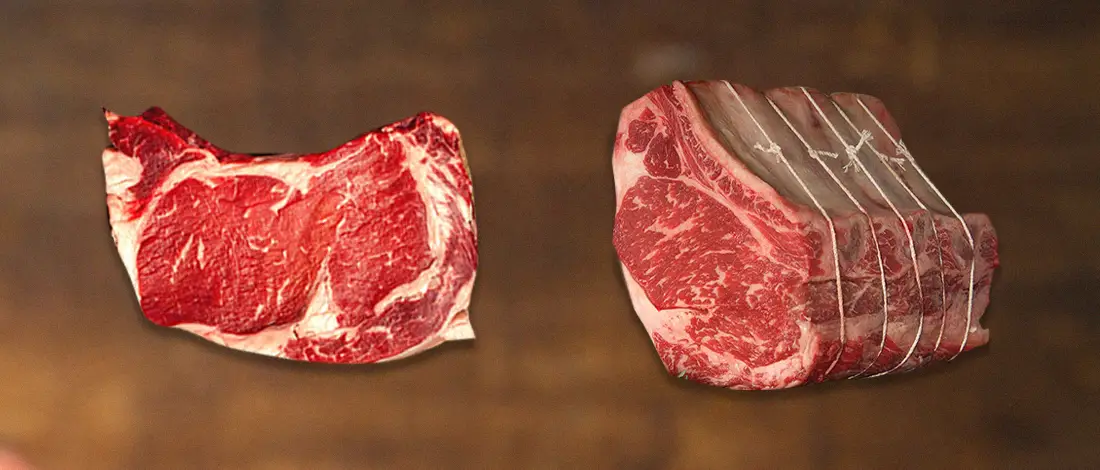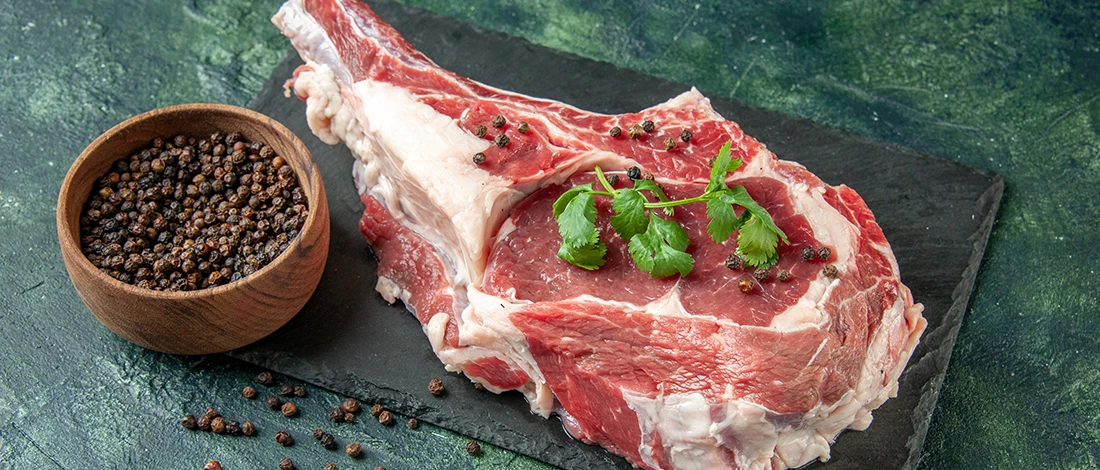Prime rib, also called standing rib roast, is the perfect choice when you want to impress your guests at a dinner party. However, it’s not easy determining how much prime rib you need per guest.
I’ve prepared countless prime ribs during the decade I’ve been on a carnivore diet for all kinds of occasions, from BBQ parties to birthdays, anniversaries, and holiday dinner parties.
I also talked with my butcher to find out how much prime rib is needed per person to help you prepare for your next prime rib cooking session.
Quick Summary
- You need a pound of raw ribs per person.
- Prime rib roasts are a great choice for a celebratory meal or a holiday dinner.
- You can smoke, grill, or cook prime rib bone in the oven.
How Much Prime Rib Per Person?
You need one pound of raw prime rib per person. A bone-in prime rib bone can serve two people per bone, which means a three-bone rib roast serves six people or four bone roast for eight people.
Pro tip: If you’re ordering prime rib from a butcher, you can request by pound or number of ribs, whichever is easier for you. For example, ask for an 8-pound prime rib for eight people.
Consider how many side dishes you’ll serve. For example, if you’re cooking a large holiday meal with a lot of other food, you need 1/2 to 3/4 (about .75) pounds of ribs per person.
But, if the prime rib is the main course for a sit-down dinner, you need one pound per person or one rib for two diners.
It’s always better to get too much than to lack. Plus, you can use leftover prime rib and have tasty roast beef sandwiches the next day.
Also, consider how much your guests usually eat. For example, if you’re serving a lot of children or light eaters, you can get less prime rib.
But get extra if you’re serving a big crowd of hungry adults.
Boneless vs Bone-In

You can buy boneless prime rib roast or bone-in. Bone-in is usually a better choice because it’s more flavorful and cooks better.
You can also ask the butcher to cut off the bone and tie the roast for you.
This way, you can cook the bones and the meat. The bones make a nice rack for the meat to sit on, but then it’s easy to remove them when you’re done cooking and ready to carve.
“The standing rib roast, cut from the rib portion and usually including six ribs, gets its name as it “stands” in the oven on its bones. It gets its nickname, prime rib roast, from its “prime” location on the beef rib, not to be confused with the USDA Prime quality grade.”
- U.S. Department of Agriculture
Bone-in prime rib also makes it easier to determine how much you need per person, as you should allocate two people per bone.
Boneless rib roast has more flesh meat compared to the bone-in roast. If you have a boneless prime rib, you should set it on a rack to roast.
Preparing Prime Rib

Here’s how to prepare the meat so you have a perfectly cooked prime rib.
1. Resting Time
You need to let your ribs rest before cooking. Take the roast from the fridge one hour before you cook prime rib so that it comes to room temperature.
Season the meat, and cover it with plastic wrap while it rests.
2. Seasoning
Season with salt and pepper, or use herbs such as thyme, rosemary, and garlic, and rub the prime rib on the outside. Seasoning is crucial for giving the roast that seared and crackling crust.
You can season an hour or two before cooking or the night before. Make sure to always generously cover the meat.
3. Tie the Roast
Get some butcher string and tie the roast to keep everything together during the cooking. This also makes it easier to carve.
In case you’re cooking bone-in roast, tie between the bones. If you’re cooking a boneless roast, leave a gap of one or two inches between strings.
Also Read: Should You Leave the String on Prime Rib?
4. French Cut
If you’re having a dinner where presentation is important, you can use a French cut where you remove fat and meat from the bone.
Leave the handle of the rib clean and easy to hold. You can also ask your butcher to do this for you.
5. Resting Time After Cooking
Once the prime rib reaches a safe internal temperature, remove it from the oven, and tent the roast with foil.
Let it rest for half an hour for a perfect prime rib roast. This allows the juices to redistribute and seal back into the meat.
If you cut the rib roast too soon, the juices will run out, and you’ll have chewy meat.
Related Articles:
Cooking Prime Rib

Smoking and grilling are the two most common ways to cook prime ribs.
1. Smoking Prime Rib
Smoking prime rib is a great way to render the fat and break down the tough connective tissue, so you have tender meat. However, you have to be very careful not to dry out the meat.
Here’s how I smoke my prime ribs:
- Turn on the smoker. The smoker’s temperature should be between 220 to 240 degrees during the entire smoking session.
- Put the seasoned meat on the smoker.
- Smoke until the internal temperature reaches 135 degrees for medium rare or 125 for rare.
- Let the smoked meat rest for 20 to 30 minutes. Cover the meat while resting.
Pro tip: If you have too many smoked ribs, you can freeze them for later. Place the ribs in a ziplock back, and make sure to use them within eight months.
2. Grilling Prime Rib

You should grill for about 20 minutes per pound. Use a meat thermometer to check the internal temperature and determine when the meat is done.
The meat’s temperature should be around 140 degrees before you remove it from the grill.
Here’s how to grill prime ribs:
- Heat the grill for indirect grilling to 375 degrees.
- Put the seasoned prime ribs over indirect heat.
- Close the lid and grill until the internal temperature is 130 to 140 degrees.
- Once the meat reaches adequate internal temperature, remove it from the grill and put it on a cutting board.
- Loosely tent in foil and rest for half an hour.
- After half an hour, remove the foil, cut the strings, and separate the bones. Cut across the grain. If you cut along the grain, the meat will be tough and chewy.
Pro tip: Prime ribs will continue to cook after you remove them from the heat, so it’s better to take them out early than risk having overcooked meat.
Note: You can also cook prime ribs in the oven. The oven temperature should be 325 degrees, and cook for 23 to 30 minutes per pound [1].
FAQs
How Much Boneless Prime Rib for 8 Adults?
You need eight pounds of boneless prime rib for eight adults.
How Many People Will a 5 lb Prime Rib Feed?
A 5 lb prime rib will feed four to five people.
References:
- https://www.fsis.usda.gov/food-safety/safe-food-handling-and-preparation/meat/


